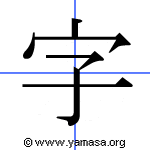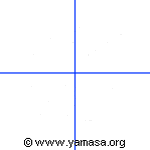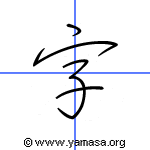


The AnimatedKanjiViewer is a kanji dictionary. It allows look-up of information on about 13,000 different Kanji. The information currently supplied is meaning in English, stroke count, Japanese pronunciation (訓読み), Chinese pronunciation (音読み) and pronunciation as used in names (名乗り). I have also included a Heisig key word.
To use the viewer, enter characters you are interested in into the search window at the top of the application. The characters can be Kanji, Kana or western characters. The kanji will be filtered and their information displayed in the table below the search window. This allows you to copy/past a complete phrase into the window and see information on only the Kanji in the phrase. For instance you could enter "私の質問は・・・" and you would see information on the kanji 私, 質 and 問 with the other characters ignored.
This application differs from other dictionaries I'm familiar with in only one place: it also includes graphic images for almost 2,000 kanji. The images include examples of the printed kanji, the kanji as it might appear if written with a pencil and most especially, an animated image that shows how to write the image. Examples of the characters are shown below.



I first encountered the images several years ago on Yamasa's Kanji Dictionary and found they really helped me to learn how to read and write Kanji. I've been writing Android applications for several years but only recently learned how to display animated images. That allowed me to write this application. Recently I received permission from the Yamasa Institute to use these images in an Android Application.
The Kanji images used in this application were developed by the Yamasa Institute in Okazaki, Japan. Yamasa Institute owns the copyright on the images and I am allowed to use them on three conditions: the app must be free, must not contain in-app purchases and the images must not be altered.

The kanji information is from Kanjidic files obtained from the Electronic Dictionary Research And Development Group (EDRDG) are available under the Creative Commons Attribution-ShareAlike Licence (V3.0). The License Deed can be viewed here and the full license code can be viewed here.

Licensing and attribution on the Heisig key-words is a little more complicated. It comes from heisigwords.html. I contacted the owner of this page and was told that the supplier of the key-words was Mike Spertus. Mike said "I've confirmed with Jim Heisig that this information may be freely donated to the EDICT project." I haven't been able to contact Mike directly however and the owner of the page said "I'd go ahead and use them, with acknowledgment." Personally I used Remembering the Kanji and found it to be really helpful. So there you are...